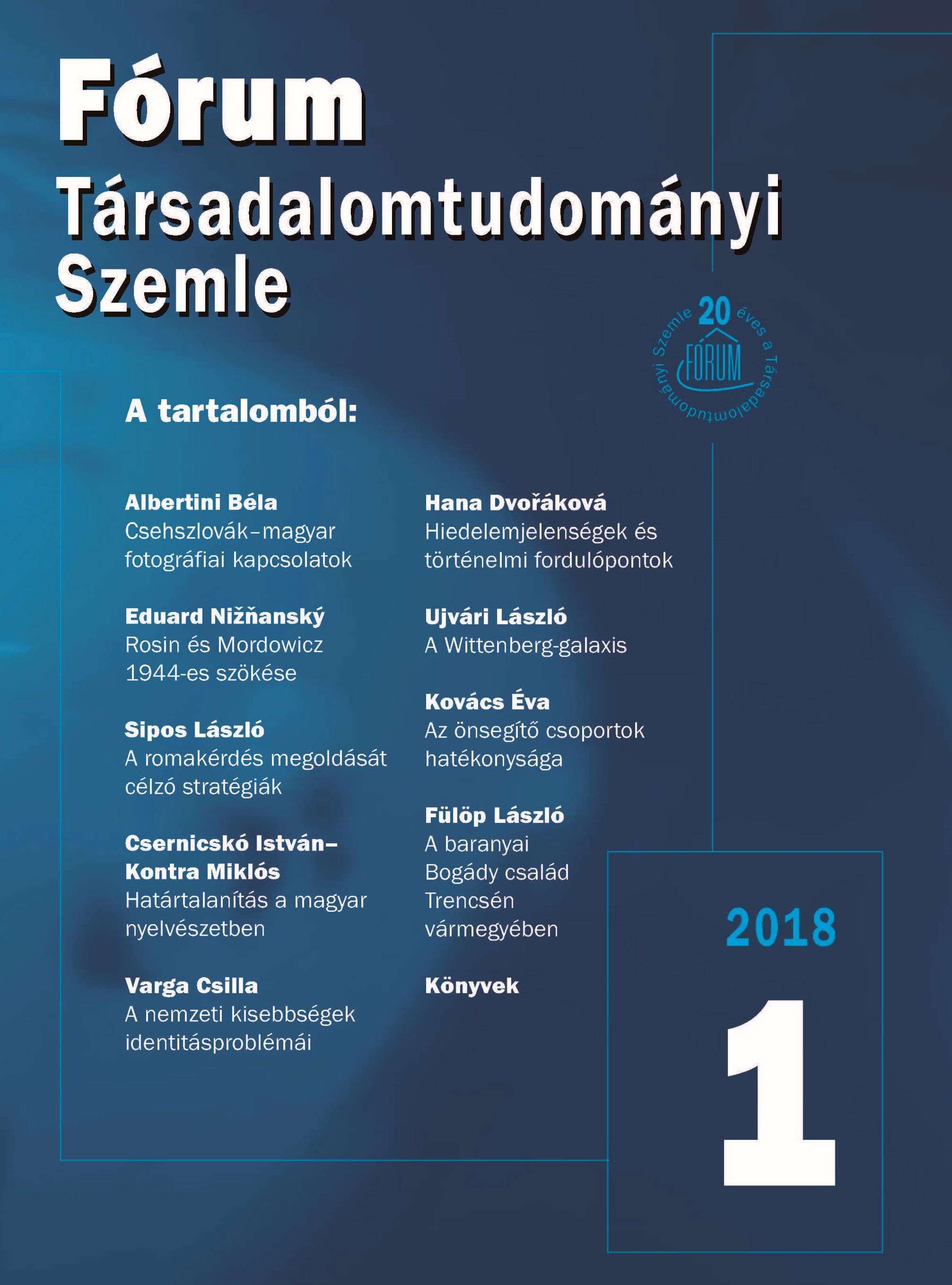
Kétnylevűség térben és időben
Misad Katalin (szerk.): Kétnyelvűség térben és időben Pozsony, Szenczi Molnár Albert Egyesület,2017, 160p.
More...We kindly inform you that, as long as the subject affiliation of our 300.000+ articles is in progress, you might get unsufficient or no results on your third level or second level search. In this case, please broaden your search criteria.

Misad Katalin (szerk.): Kétnyelvűség térben és időben Pozsony, Szenczi Molnár Albert Egyesület,2017, 160p.
More...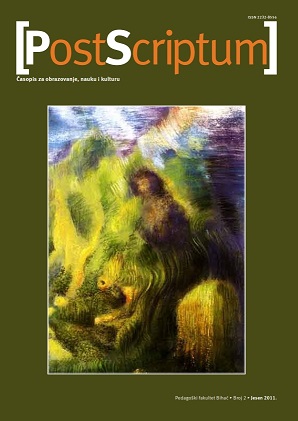
Meiner Meinung nach hat der Deutschschweizer mithilfe seiner schweizerischen Lehrwerke bereits den ersten Schritt gewagt, um sein Schweizerdeutsch am Leben zu erhalten. Trotzdem befindet sich das Schweizerdeutsch heute mehr denn je in sprachlicher Gefahr. Es wird durch die deutsche Standardsprache aber auch in der Zeit der Globalisierung durch den Wortimport aus dem Englischen beeinflusst. Während das Pferd auf Schweizerdeutsch immer noch Ross ist, so bezeichnet man die Sportart als Pferderänne oder Stäge ist weiterhin die Treppe und wenn sie sich bewegt, dann erkennt der Deutschschweizer das als eine Rollträppe. Es ist schwierig die Zukunft einer Sprache zu prophezeien. Es ist aber nicht auszuschließen, dass eine einheitliche schweizerdeutsche Sprache in der Zukunft sich wirklich entwickelt und durchsetzt. Was geschieht, bleibt die Frage der Sprachenpolitik. Die Mundart ist der Ausdruck des nationalen Selbstbewusstseins. Der allgemeine Gebrauch der Mundart widerspiegelt den demokratischen Charakter unserer Gesellschaft. Nur in der Mundart lässt sich Gefühlsmäßigkeit adäquat ausdrücken. Die Mundart ist der Hochsprache gegenüber mindestens gleichwertig, wenn nicht sogar überlegen; sie eignet sich daher auch durchaus als Sprache anspruchsvollerer Literatur. (Ris 1973: 35)
More...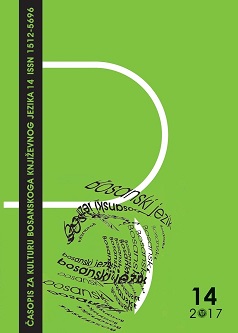
Tekst „Na marginama jednog skandala: ʻStavʼ nastavlja raditi po ʻPravopisuʼ iz 1996. godine“ doživio sam kao vrijeđanje Pravopisne komisije i autora. Ne mogu da vjerujem da se redakcija jednog časopisa potpisala ispod teksta u kojemu piše: „Bošnjački stid, mimikrija i autošovinizam porazili su karakterističnu leksiku bosanskog jezika...“ Čiji je bošnjački stid – je li to kolektivna krivica? Autora Pravopisa ne branim, on se umije braniti i sam. Pitam se kakva bi bila reakcija „Stava“ da Senahid Halilović nije potpisao tzv. Deklaraciju o zajedničkom jeziku.
More...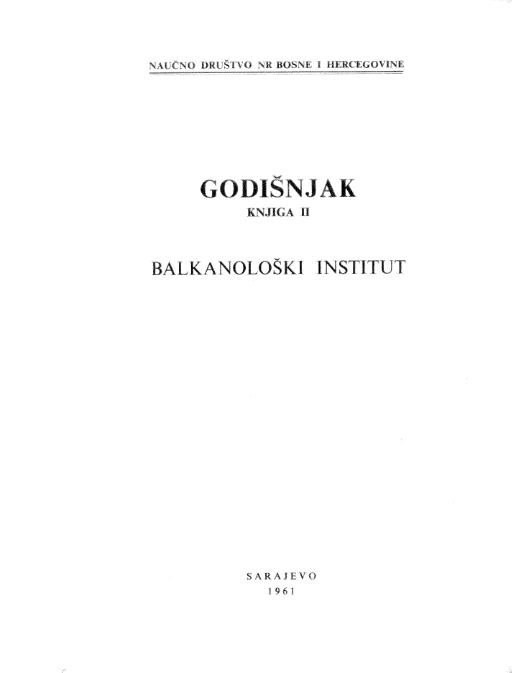
Comme toujours, je prends d’abord en considération le vocabulaire. Les dialectes serbocroates ne remplacèrent ceux de la langue roumaine que dans une relativement petite partie de la Yougoslavie actuelle, à savoir, à l’extrême Est de la Serbie proprement dite, de sorte que «les reliquats de mots» roumains selon l’avis de J u d doivent être moins nombreux qu’en bulgare. Cependant on en trouve partout où on parle le serbocroate, c’est à dire en Serbie, en Vojvodina, au Monténégro, en Bosnie, en Croatie et sur la côte de l’Adriatique. [...]
More...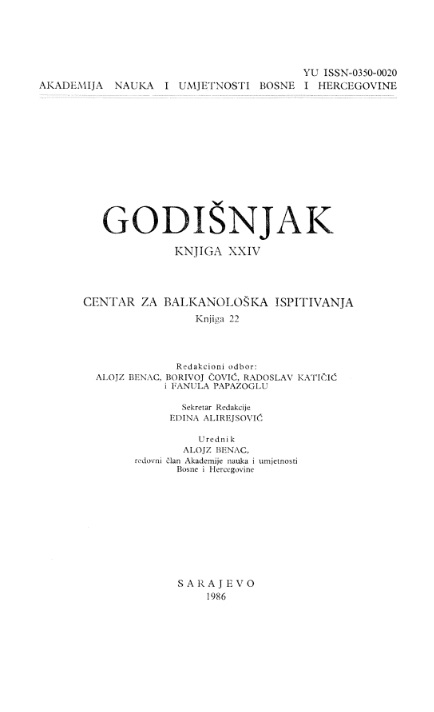
Au début de cette contribution l’auteur parle de l’extension du groupe des peuples dans les Balkans antiques — Illyriens, Macédoniens, Thraces, Mésés et d’autres et il souligne que leurs migrations avaient provoqué les mélanges ayant comme conséquence la diminution des différences nationales et la simplification de leurs diversités linguistiques. Les conséquences de la domination romaine dans les Balkans ont été difficiles — la disparition des langues qui ne sont pas grecques : vieux-macédonienne, illyrienne, thrace, et les autres, et seulement, selon l’opinion de l’auteur, la branche méridionale des Illyriens a réussi à protéger son identité avec la langue, dont les descendants sont les Albanais d’aujourd’hui, La domination byzantine au Moyen âge avec la culture grecque, l’apparition des Slaves, la conquête de la Péninsule balkanique entière par les Turcs, ont changé essentiellement la forme ethnique des Balkans, ainsi que chez les peuples balkaniques et dans leurs langues a été augmenté le nombre des traits communs. La conséquence de ce mélange intensif est la formation du type balkanique de culture et de langue. La plupart des langues des peuples balkaniques a obtenu la flexion analythique au lieu de celle synthétique et nombreuses nouvelles catégories linguistiques du type analythique. Un trait caractéristique balkanique est le phénomène de forme de l’admiratif en albanais, en macédonien et en bulgare, mais l’albanais a des formes particulières. L’auteur mentionne que le système numérique entre 11 et 19 est un trait caractéristique pour la plupart des langues balkaniques, mais il souligne qu’on a conservé dans les parlers albanais le système numérique vicésimal, ce que devrait être le reliquat du substrat linguistique préindoeuropéen, et le système décimal est la qualité du inonde indoeuropéen. Aucun membre de l’unité linguistique balkanique — bulgare, macédonien, roumain, albanais et grec, ne fait la différence entre les expression de tranquillité et de mouvement. Ce phénomène s’est déplacé aussi sur certains parlers serbes sur Kosovo, en Serbie orientale, ainsi que sur certains dialectes monténégrins. L’auteur mentionne un trait linguistique intéressant albano serbe, qu’on trouve dans le système des parlers serbes sur Kosovo: tavaj, tava, tavo; tanaj, tana, tano, que Giiša Elezović, dans son dictionnaire du dialecte de Kosovo et de Metohija, tient qu’il a passé des parlers albanais. L ’auteur de cette étude écrit qu’ont été formées dans certains parlers monténégrins et albanais plusieurs expressions linguistiques indépendantes, se manifestant par la spirantisation des médiopalatales: ć-j: stići-stij; pronaći-pronaj; noć-noj ; dj-j: svuda-svudj-svuj, kud, tudj-kuj; la même chose dans certains parlers albanais: gj-j: sogj-zoj ; ograda-ograj; kongj, kinj-kij; meka- -mejë; ć-j: pleq-plej, miq-rmj-mijt; Peć-Pejc. L ’auteur a démontré l’importance de l’influence des langues sud-slaves sur la langue albanaise, comme par ex. la conservation dans cette langue des voyelles nasales slaves: orïndi (oroditi), pnedar, (podar, pudar), sundoj (saditi, suditi), rëndrend (rqd). Il y a ajouté la duplicité dans la substitution du groupe consonantique préslave tj, kt, dj dans les dialectes de la langue albanaise: megjë-mezhdë. L’auteur tient que le nombre des mots d’emprunt d’origine albanaise dans certains parlers serbes et macédiniens est assez grand et il donne quelques exemples. Il y est nécessaire analyser au moins la stratification chronologique relative des mots d’emprunt albanais dans les parlers mentionnés. L ’attention particulière mérite l’effort de l’auteur de constater entre le typa dialectale des parlers albanais d’un côté et des parlers serbes de Kosovo de l’autre côté, un grand nombre de concordances dans le domaine de phonétique, de syntaxe et de lexique, que c’est par ex, la réduction des affriquées: c-q, xh-gj, dans les parlers serbes: č-ć, dž-dj — à une paire: é-dj, avec la tendance de mollissement, A la fin l’auteur constate que le trouble de prononciation correcte de deux paires des affriquées n’est pas provoquée par l’influence étrangère, mais c’est le résultat du développement intérieur des parlers albanais au temps que les médiopalatales q, gj dans les parlers albanais de Kosovo avaient perdu leur valeur phonologique sous certaines conditions socio-historiques. Les conditions extralinguistiques ont considérablement soutenu, sans doute, le processus déjà commencé dans ces parlers. Le développement des processus analogiques dans les parlers serbes dans la région de Kosovo est, selon l’opinion de l’auteur, la conséquence des agitations intérieures avec l’appui dans les grands changements sociaux, dans les migrations à l’intérieur de demeure, dans les immigrations des présentants des autres dialectes et des langues dans ces stations venant des régions méridionales et orientales.
More...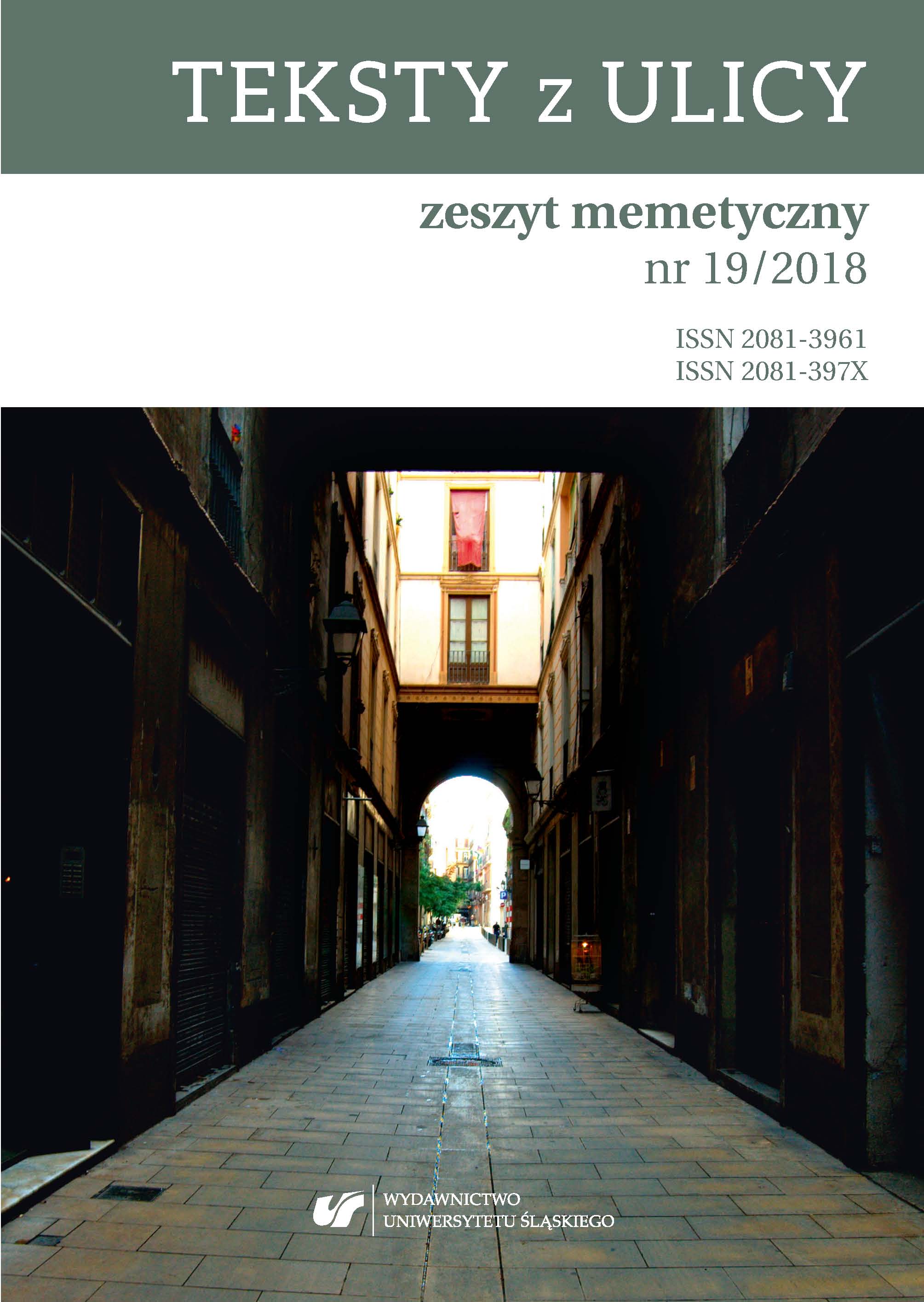
In the article is presented semantic analysis of polish lexical items ‘transmisja’ i ‘przekaz’ in contrast of English unit ‘transmission’. The contextual analysis of its use that allows constructing their exact meaning concerning a practical application of this term as well as its purpose that is crucial in the understanding of Dawkins idea of a transmission that is the primary term for memetics studies.
More...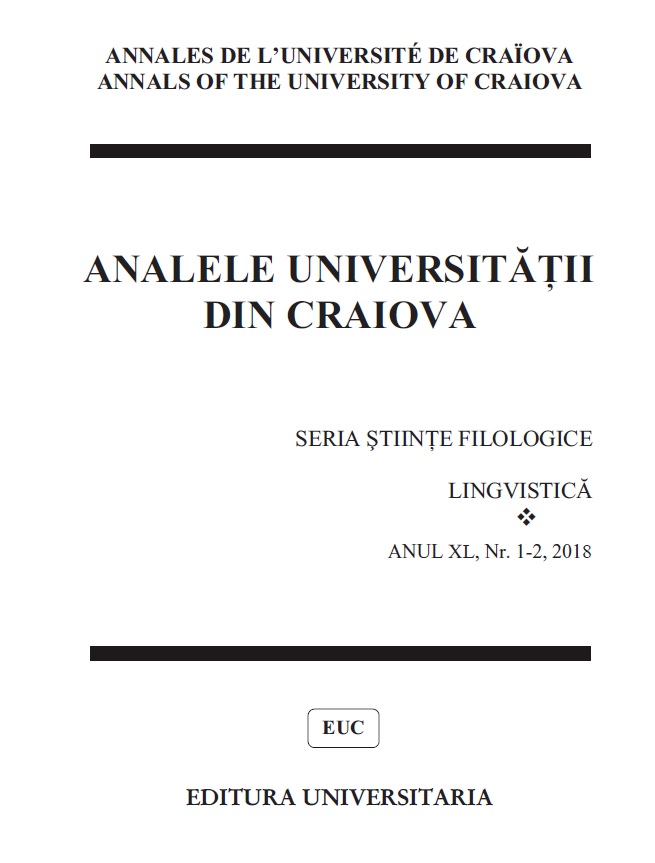
This paper analyses closing formulae in French, Italian, Portuguese, Romanian and Spanish business letters from a pragmatic, lexical and semantic perspective. Starting from the speech act theory, the paper shows the ways to express request, apology and gratitude in these formulae, with a special focus on the morphological and semantic aspects. Moreover, another aim of this paper is to provide a contrastive approach on these formulae, by highlighting situations of symmetry and asymmetry in the studied languages. Last, but notleast, this approach is of a synchronic nature, as the only references to a diachronic approach are some etymological considerations.
More...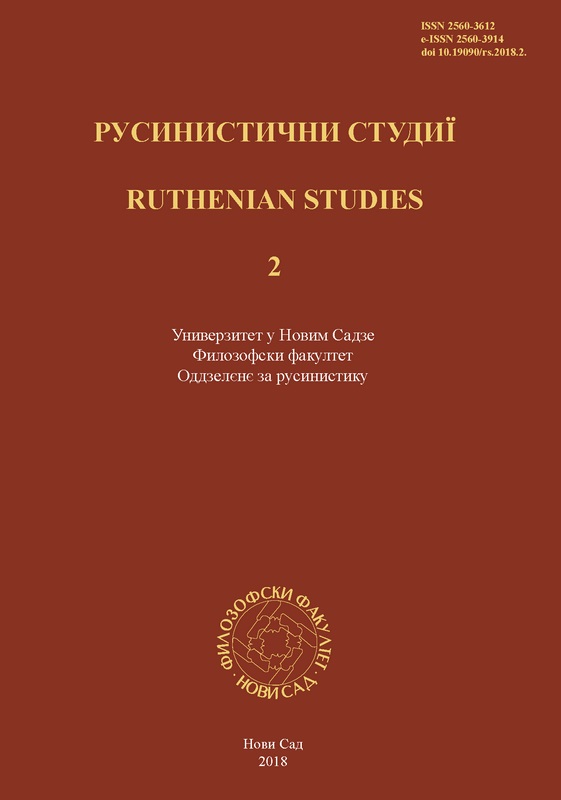
The article discusses the similarities and differences between Slovene and Vojvodina Rusyn sonorants. Slovene and Vojvodina Rusyn sonorants are divided into two groups, vowels and consonantal sonorants, and analysed, i.e. described and compared, in terms of phoneme subinventories, allophones and their effect on voicing. With regard to sonorants, the contrastive phonemic analysis shows considerable differences between Slovene and Vojvodina Rusyn.
More...
The verb be has been thoroughly researched in English language, and its equivalent in Ruthenian language, the verb буц, has been researched as well, although not as completely. However, the attention has not been given to contrasting these two verbs. For this reason, in the first part of this paper, the author will collect and present relevant research of several linguists of both languages, and in the second part, she will contrast these verbs through the analysis of the survey, which contains sentences relevant to this topic, originally in English and translated into Ruthenian. Based on the previously mentioned research and analysis, the author will provide a conclusion in which the explanations about how the verb be is transferred or translated into Ruthenian language will be given. Additionally, in the conclusion, the author will emphasize the similarities and differences between the two verbs, concerning their use, form and function.
More...
The subject matter of this paper is the research of phrasemes with the noun ear in German and their equivalent phrasemes in Bosnian. The aim of the paper is a detailed noticing of similarities and differences between the phrasemes in starting and target language, and their classification in the equivalent groups.. The paper is divided in two parts: the fi rst one is about the main characteristics of phrasemes, their features and classification. Contrastive phraseology has an important role in the second part, where the groups of equivalents have been presented.In the practical part, the phrasemes with the noun ear in German have been analysed from Duden 11 Dictionary and there is an explanation of each phraseme meaning and its equivalent phraseme in Bosnian. Possible aberrations have been described for phrasemes that do not have the appropriate equivalent. This contrastive analysis of phrasemes shows that we have lots of same or similar phrasemes with the noun ear but also some different ones as well. Thelist of phrasemes related to the corpus in both languages is the component part of the paper.
More...
Braća Jacob Ludwig Carl (1785 -1863) i Wilhelm Carl Grimm (1786 -1859) rođena su u njemačkom gradu Hanau. Na studiju prava se preko profesora upoznaju sa književnoš ću iz vremena romantizma i ubrzo se počinju zanimati za mitove, legende, bajke i narodne pjesme. 1812. godine objavljuju prvi svezak dječijih i kućnih bajki (Grimmove bajke). Njihove bajke spadaju među najuspješnije knjige svjetske književnosti i zasigurno su, nakon Lutherovog prijevoda Biblije, najpoznatija djela njemačke književnosti. Prva zbirka sadržavala je 86 bajki, a vremenom je taj broj prešao 200.
More...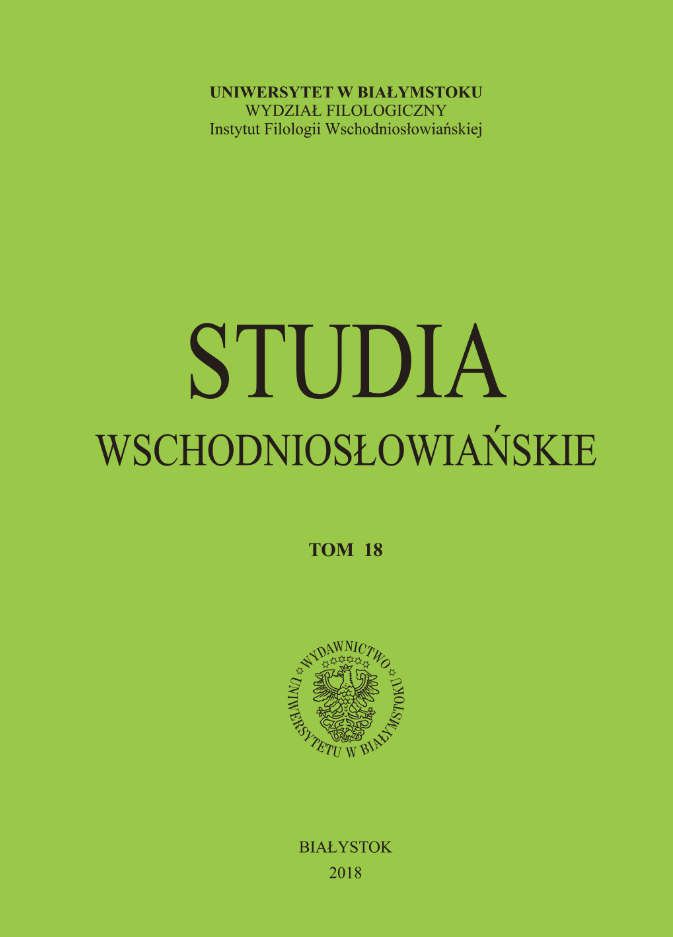
The given article presents the analysis of linguistic means used to express the conceptual sphere “Prospectiveness” in both Russian and English languages. The concepts under investigation are: imagination, anticipation, prediction, foreseeing. Great attention in the article is paid to imagination which is a key concept in the conceptual sphere “Prospectiveness”. Concept Imagination is analysed in both English and Russian linguistic world pictures, but a great value is given to its functionary in the English language from the scientific point of view and from the point of view of common sense which is represented in the “naive” linguistic world picture. A great body of English contexts is presented in the article to illustrate the usage of these abstract concepts as well as their definition in Russian and English dictionaries.
More...
The article analyzes anthropocentric zoomorphic metaphors in the Belarusian and Polish languages. In two languages, animal names are used to characterize various qualities of a person: their appearance, character, behavior, place and role in society. Such metaphors not only denote a person, but also give them a positive or negative evaluation. And more often zoomorphic metaphors are used for negative characterization of a person. Based on the analysis of the dictionary entries of the explanatory dictionaries of the Belarusian and Polish languages, cases of complete and partial similarity of semantics of metaphors are considered. Metaphors are distinguished, the meanings of which do not coincide completely, and metaphors that exist only in one of the languages. The author believes that the discrepancy in the semantics of zoomorphic metaphors in the Belarusian and Polish languages is due to the ancient concepts of the Slavs about animals.
More...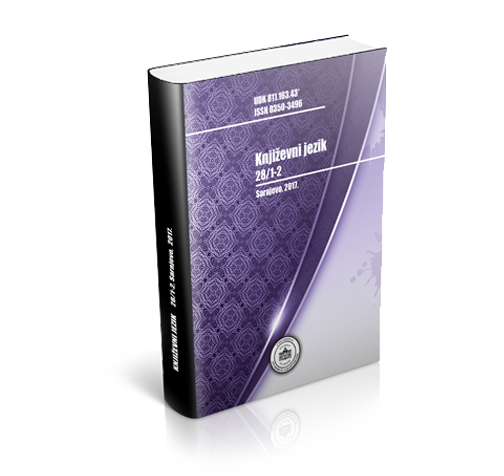
This paper deals with the classification of intensifies in English and Bosnian. The main criteria for the classification of intensifiers adopted in this paper are gradabilty of the elements modified by intensifiers, and collocational restrictions. According to the first criterion, only those adverbs that modify gradable elements can be classified as intensifiers. In this way, we can differentiate between intensifiers and a similar class of adverbs, emphasizers, which only emphasize the meaning of the modified word. Collocational restrictions too have to be taken into consideration in the classification of intensifiers. Namely, there are certain intensifiers that can collocate only with certain elements, regardless of whether these element are gradable or not (e.g. the intensifier deeply cannot collocate with the verb like in English, although this intensifier freely collocates with other verbs expressing emotional states, for example miss, hale, love, etc.). Intensifiers can be further classified according to the place they occupy on the abstract scale of intensity. According to this semantic classification we have come up with six subgroups of intensifiers: maximizers, boosters, approximators, relative intensifiers, diminishers, and minimizers.
More...
Common phenomenon among small nations, the protochronism gave birth to parallel histories, subjugating scientific research to myths and imagination. The dacomaniacs and dacopaths have their origins in Nicolae Densusianu’s work, Prehistoric Dacia, published in 1913. Ever since, in Romanian historiography there is a pseudo-scientific current, that minimizes the role played by Roman civilization and Latin language and overbids the Dac factor. Nowadays, taking advantages of naivety and poor level of knowledge that dominate Romanian audience, the new dacopths essay to write a new history. Among popular authors there are Iosif Constantin Dragan and Napoleon Savescu, none of them specialist in historic studies. The most terrifying fact about dacopaths is that they invade the virtual space and their ineptudes penetrate even trough quality papers. The scientific world does not take a stand and ignores the aspect, encouraging the dacopaths to gain even more public support.
More...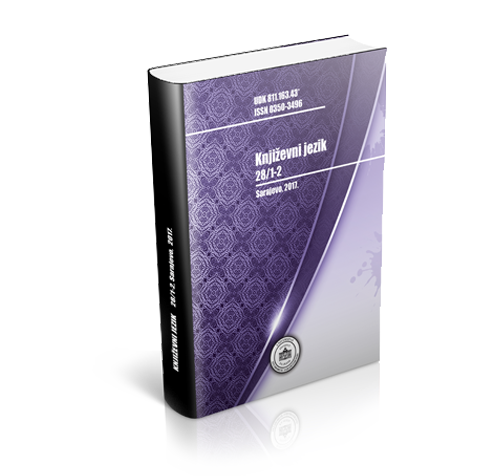
Les rapports qui s’etablient entre les deux proces lies par le suboridomiant quand (lorsque) — kad sont ceux de temps et d’opposition. Dans cette structure, la clause temporelle est toujours postposee. Aucun Instrument syntaxique n’intervient ici pour contraindre la temporelle ä se postposer. C’est le heunt de deux aspects — duratif imperfefectif dans le premier proces et momentane perfectif dans le second — qui suffit a marquer la place fixe de la temporelle. Dans cette phrase complexe, la subordonnee ne determine pas le moment du proces principal, mats c’est, au contraire, la subordonnee jui enonce un evenement nouveau, bref, qui se deroule pendant qu’une action de duree plus ou moins longue a lieu. Dans cette structure tout se passe comme si on voulait mettre en relief le second proces (proces postpose). Dans une grande majorite de phrases du type qui nous interesse, se rencontrent dans la premiere proposition des tournures verbales ä l’aspect incohatif ou volitif, dans le second membre apparaissent des expressions ou des adverbes qui soulignent la soudainete et marque la rupture de la premiere action en faveur de 'la seconde. Le couple temporel de base de la construction qui nous preoccoupe en francais est imparfait — passe simple, en serbo-croate le plus-que-parfait (passe compose) — aoriste. Le subordonnant quand (lorsque) — kad est ici une conjonction de peripetie.
More...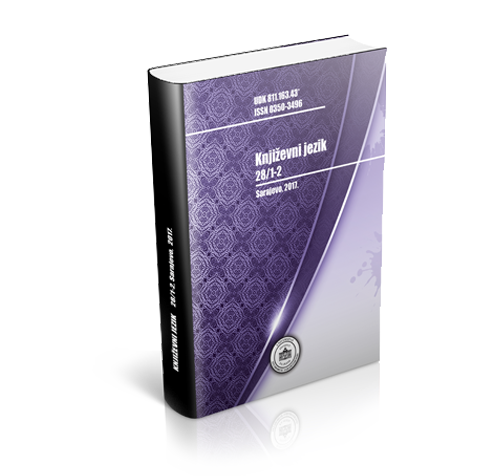
Славянизмы и русизмы представлены во всех трёх главных произведениях П. П. Негоша. Это вполне закономерно если учесть литературный профиль и биографию великого поэта нашего языка. Негош принадлежал литературному направлению сербского предрамантизма, но вместе с тем ему присущи и некоторые приёмы псевдоклассицизма. Нельзя забывать также, что Негош был теркратинеским правителем Черногории, то есть он заодно был главой церкви и главой своего крошечного государства. Кроме того, Негош читал книги на русском, языке, среди прочих авторов даже Пушкина. Автор следит за стилистической функцией славянизмов и русизмов в приведённом произведении великого поэта. Как правило, у сербских поэтов минувшего столетия трудно отграничить русизмы от славянизмов. Исследователь здесь наталкивается на непреодолимые прелятетвиа методического характера.
More...
Irrespective of the fact that two negations in the same clause usually cancel each other out and result in an affirmative sentence, the phenomenon of double negation in English is still a disputable problem. These aspects all lead to linguistic complexity of double negation in SLA followed by a description of its relevant characteristics and contradictory aspects in English and Ukrainian. This study aims to establish a cognitive model of double negation as understatement via a mitigation operation as regards its specific contextual effects and to explore the impact of the language of instruction on the linguistic complexity of double negation to the learner of English. Within the theory of negation, this research applies the hypothesis to the assumption that English is the main language of instruction for a Ukrainian learner, and how L2 learners’ comprehension and production of double negation occur. The hypothesis is empirically tested against the English sentences with their Ukrainian equivalents and the tasks in the questionnaire written by learners of English. The results of my research suggest that when learners interpret L2 sentences with more than one negative element we identify both similar and different double negatives in a students’ first and second language that influence enhanced awareness of double negation and which is important for successful L2 comprehension and use.
More...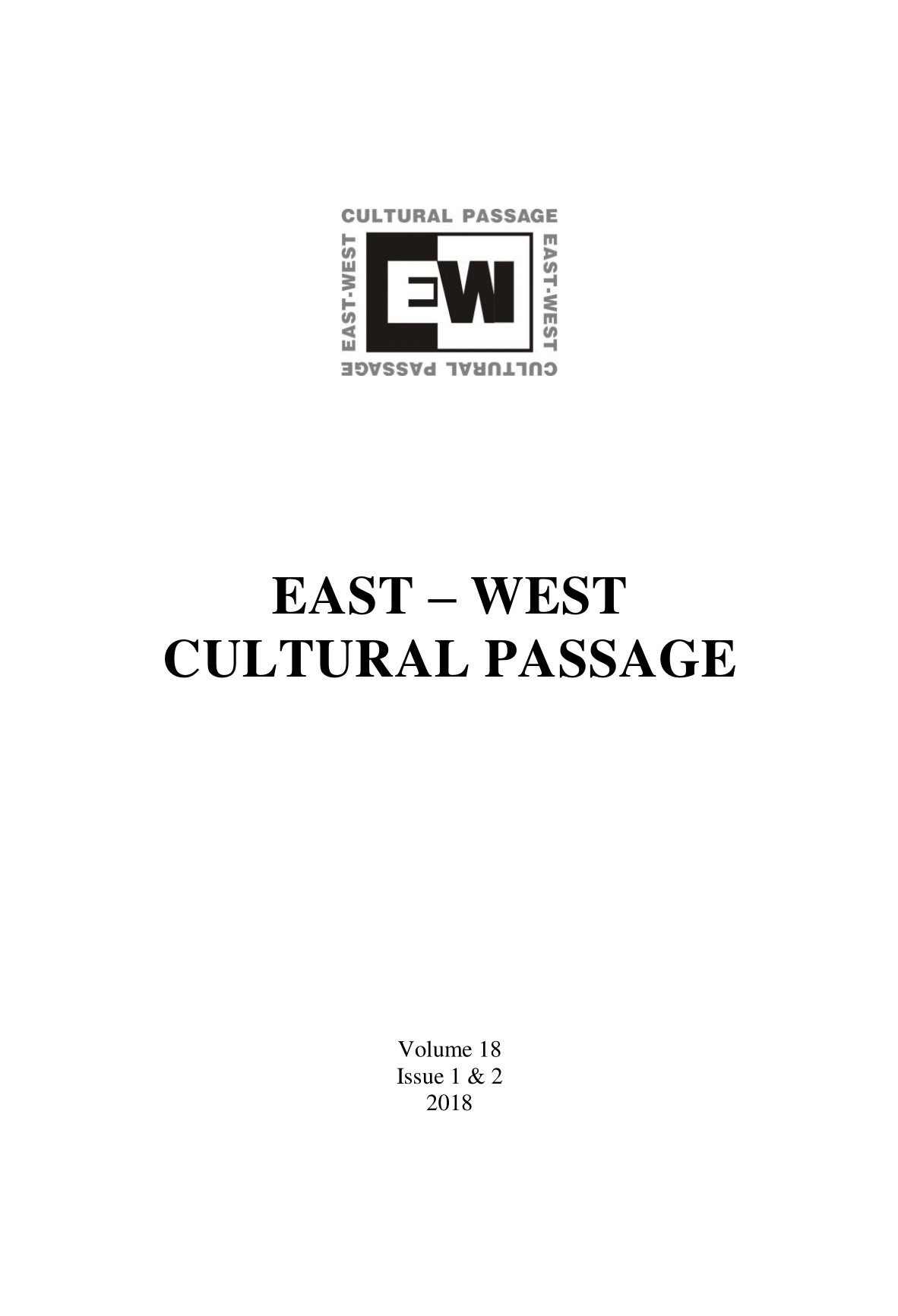
There have been various claims made regarding the evolution of Albanian and Romanian from the Proto-Indo-European language. Some linguists claim that they are two separate languages with distinct developments, while some propose that they are far more closely related, perhaps even forming a subgroup within the IndoEuropean family. Another claim is made that a substrate language influenced these two languages, which can explain some intriguing similarities between these languages. This essay investigates the claims made for and against the subgrouping of Romanian and Albanian and establishes whether or not there is sufficient linguistic evidence to claim that there is a language from which both descend, or if these two languages rather share a long history of contact and influence of a substratum language.
More...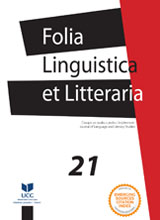
This paper analyzes the structure of conference abstracts written by the authors of the Serbian speaking area, from the field of literature. We are comparing the abstracts by Philologists, Serbs, Anglists, Romanists, Germans, and Russians. The research is carried out in order to determine how much the abstracts of these authors vary by structure. During the analysis, the model of a Ukrainian linguist Tatyana Yakhontova (2002) was used. She applied this model in order to compare the conference abstracts of Anglo-American, Ukrainian and Russian authors. Our goal is to determine to what extent the authors philologists adhere to this model. First, we present theoretical data of the structure of the conference abstracts, as well as rhetorical steps and strategies by means of which they are structured. Then, after describing the methodological settings, the results of the research conducted on the corpus of fifty summaries have been represented. The given results have been shown in the tables. The analysis included, first of all, frequency of all steps, then the frequency of the rhetorical strategies in individual steps. The results have confirmed the hypothesis that the Anglists most often follow the rules of the abstract given by Yakhontov, followed then by Romans, Germans, Serbs and Russians.
More...